Travel around Madrid in 24 hours
I was on exchange in Madrid and let me tell you: you are neither not going to be disappointed, nor bored.
This city has so much on offer. Throughout my time here, five Mexican friends and two relatives visited me. Some of them were here with me for a while, whereas others only had a couple of days. Obviously, they came to see me, but they also wanted to see the city.
After having guests stay come to stay with me for two or three days, I decided to make a list of things to see in Madrid in 24 hours. Although, if you have more time, you can spend longer doing these things so that the itinerary isn't as intense - travelling is tiring, of course.
If you live in Madrid and have friends that only visit for a short while, this list will be of great help to you. It will also be of use to you if you are not going to Madrid for long and you don't know what to visit.
This list has to be followed in order. One of the advantages of Madrid is that it's one of the most important European capital cities, but it's also a small city, so many of the main tourist attractions are only a short walking distance from one another. They are also situated in such a way that you can follow a route that passes by them all both easily and continually.
Very good... Let's begin, time is golden!
Stop #1: Plaza de España
Almost all Spanish cities have a "Plaza de España": Madrid's version is small, but charming, due to having an enormous sculpture of Don Quijote and Sancho Panza, which is Cervantes' most famous monument. You will also find the Edificio España at the rear - although you would find it empty at the moment, it is a symbol of Madrid. If you go there as an Erasmus student, this will be the place where they meet you when you go for university-organised excursions to another city or another country.
If you walk for eight minutes from here, you will find the famous Temple of Debod; a gift from Egypt to Spain. Although it is not obligatory to visit it, if you have time on your side, you can without a doubt enjoy one of the best sunsets in the city from here.
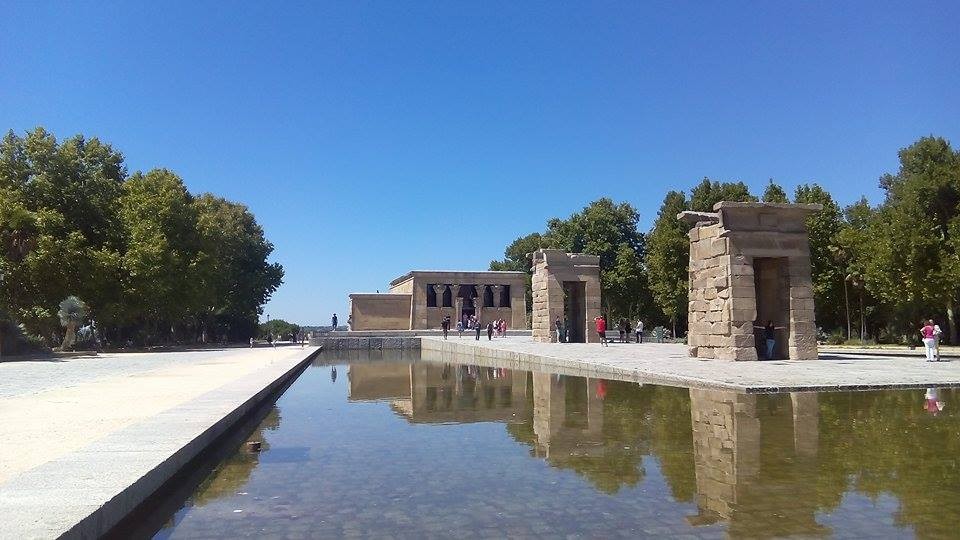
(Temple of Debod)
Stop #2: Royal Palace of Madrid and Almudena Cathedral
The Royal Palace of Madrid is one of most visited architectural gems by tourists in the city. It's very important, as it was formerly the official residence of the Spanish Royal Family, since its construction in 1751. Although several years ago, the Royal Family moved to the Zarzuela Palace, which isn't open to the general public. The Royal Palace of Madrid is open to the general public for its museum, found inside the building, and it occasionally closes when there are official State ceremonies or visits from foreign State leaders. In order to admire its beauty, it's not necessary to buy a ticket: many tourists prefer to take a photo outside and visit the Sabatini Gardens, found behind the palace. It's completely free to enter the gardens, and, from there, you can find incredible viewpoints of the palace - especially during sunset. If you have time, it's worthwhile visiting the inside of the palace. The ticket costs approximately 11€, which converts to being roughly around $13. 50 based on the current exchange rate. Once inside, it's not permitted to take photos, which is why I suggest taking some outside. If your friends' arrival happens to fall around a Thursday, luckily the tickets are free between 4pm and 6pm (when it closes). Although, do bear in mind that the closing times change depending on whether it is the summer or winter season.
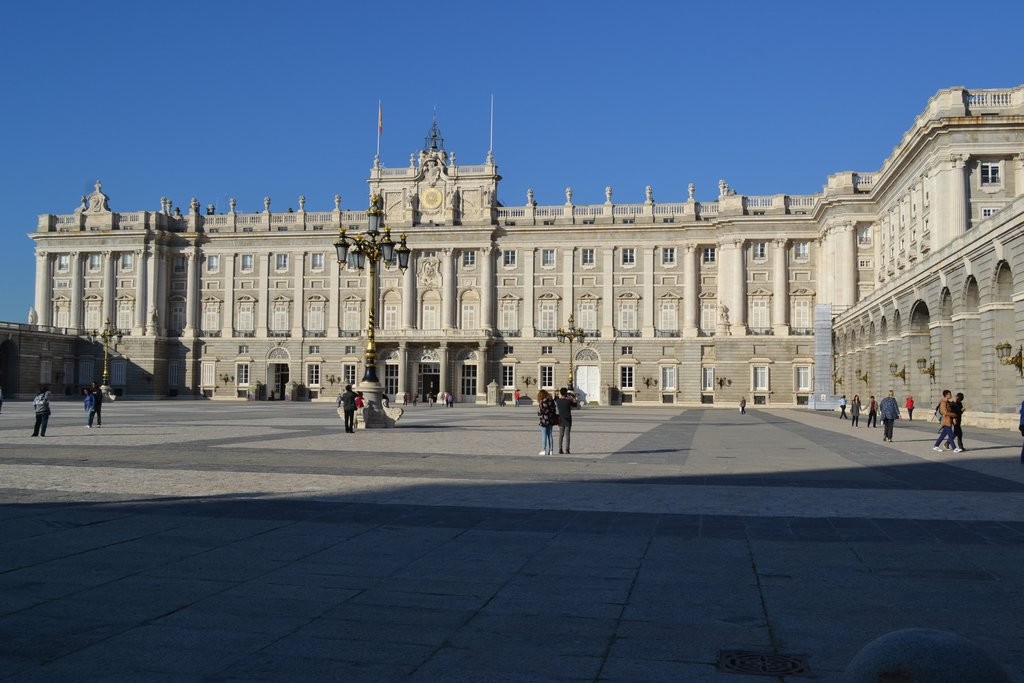
(Photo of the palace from the outside, although, from this point of view, you can't see the railings that surround it. )
Just in front of the palace, you will find the famous Almudena Cathedral, where the current King and Queen married in 2004: Felipe and Letizia. Although they charge 1€ for entry, you may be lucky enough to go in during mass to admire the building from the inside.
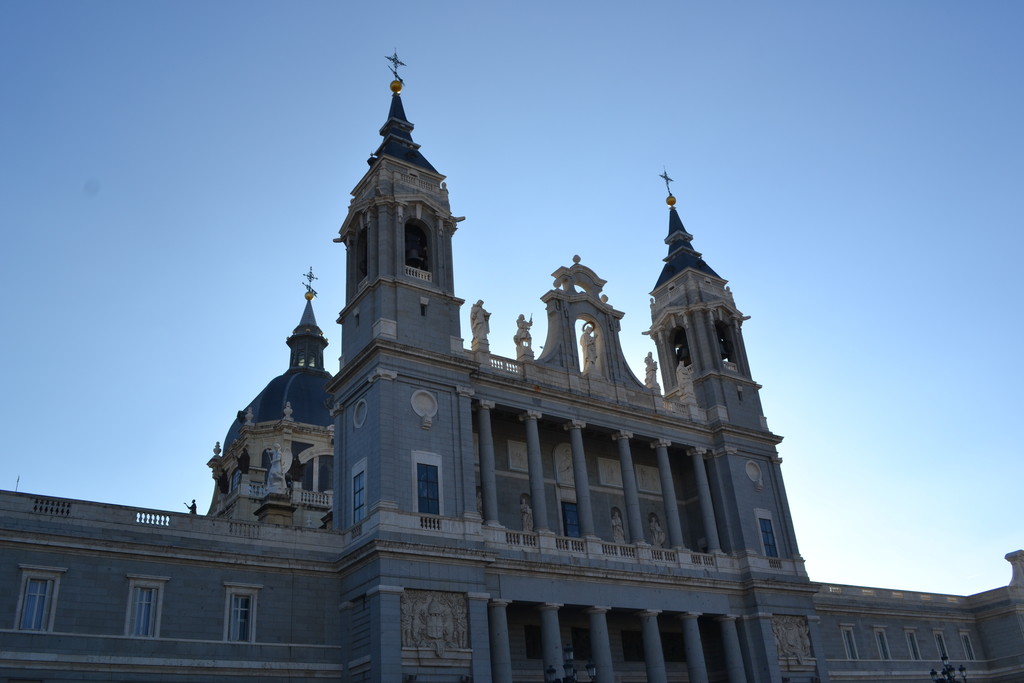
(The impressively-sized Almudena Cathedral situated just in front of the Royal Palace. Although, this is actually a side view of it, its entrance is on the left. )
Stop #3: Plaza Mayor
This is one of the oldest and most important sqaures in Spain, although bear in mind that almost all Spanish cities have a "Plaza Mayor". Personally, I like Salamanca's square much more than Madrid's, although Madrid's does have its own charm. In the past, this square formed part of Madrid's suburbs and was used for the sale and trade of goods - like a market, I guess. It was constructed by Felipe II in the year 1580 (it's almost half a millenium old! ) for music and cultural events, for military marches and even for the typical running of the bulls. Currently, this plaza is surrounded by three residential buildings, so you can already imagine how expensive the rent is there. Rooms with a balcony are expensive in themselves, so now imagine how expensive a room with a balcony is that has a view of the historic Plaza Mayor. One of these buildings is "La casa de la panadería", a public building with decorations and paintings that is worth taking a photo of.
If you go to this square, you will become more familiar with Madrid's culture, as this is a very popular place for the locals to come to, especially at Christmas. Concerts are put on for the general public and you can admire the Christmas lighting, where they hang lights in the shape of presents high in the sky. There are also markets that sell churros, bread and other food.
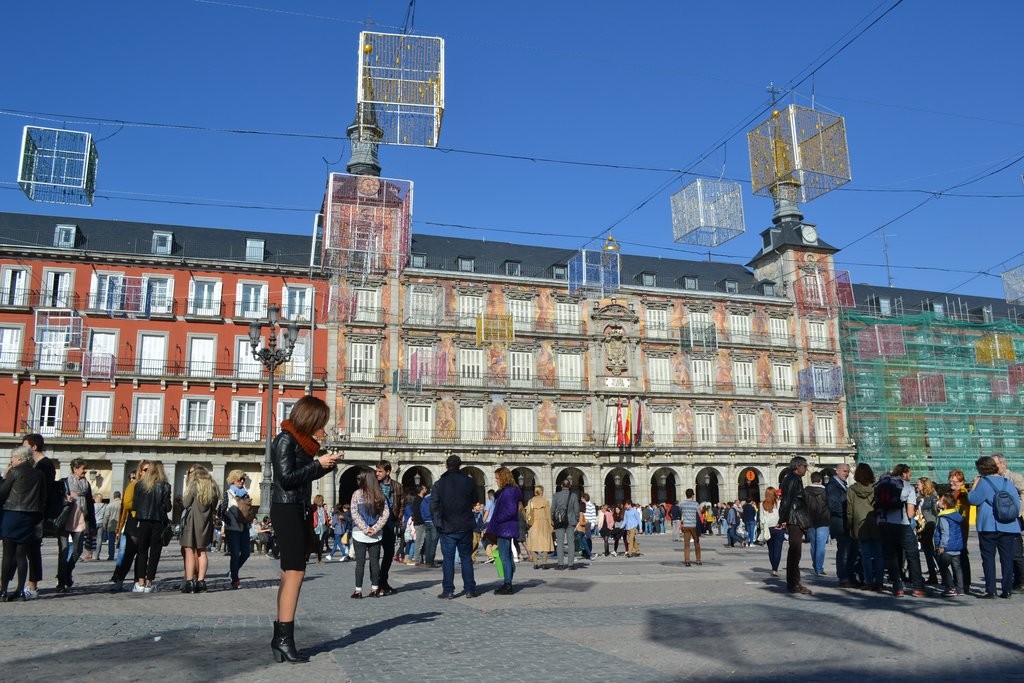
(In the top section of the photo, you can see the Christmas decorations hanging and lit up at night, which makes the square look spectacular. The building that is at the front of the photo has incredible patterns - you should get closer to them to take a photo. )
You will also find children that have silver-coloured costumes with colourful sparkles; if you want to, you can go up to them, but if you do do it, you could be surprised and given a frightening shock! If you want a pretty photo as a souvenir of Madrid and something kind of ad hoc culture-wise, you can pay 1€ to pretend you are a flamenco dancer or a brave bullfighter. Many people dressed up in a funny or atypical way will come towards you, some dressed as Dora the Explorer or Spongebob Squarepants, who may catch your attention or that of children. Remember that once they have come up to you, it is almost impossible to get them to go away, and if you agree to take a photo with them, they want you to pay them 1€ or $1. In my opinion, it's too expensive for a photo.
Stop #4:Puerta del Sol, where it all starts
If you want to visit the heart of Spain, it's compulsory that you take a walk around the Puerta del Sol. This square is very important because it's tradition in Madrid to bring in the New Year here. This tradition is really fun because you can eat the twelve grapes with other Spanish people, which they begin to eat when the twelve strikes of the clock sound.
Throughout the month of December, people usually put colourful wigs on. Therefore, it's likely that you will see hundreds of wigs in the nearby streets. Also, during the Christmas period, a huge, yet beautiful, Christmas tree is erected in the Plaza del Sol. The Madrid natives love this time of year, because, when they find out when the tree is being put up, they all head to the centre to watch.
Also in the photo, you will see the Royal House of the Post Office, which is the oldest building in this square. It is famous for its centennial clock, which is the one that strikes twelve times at New Year.
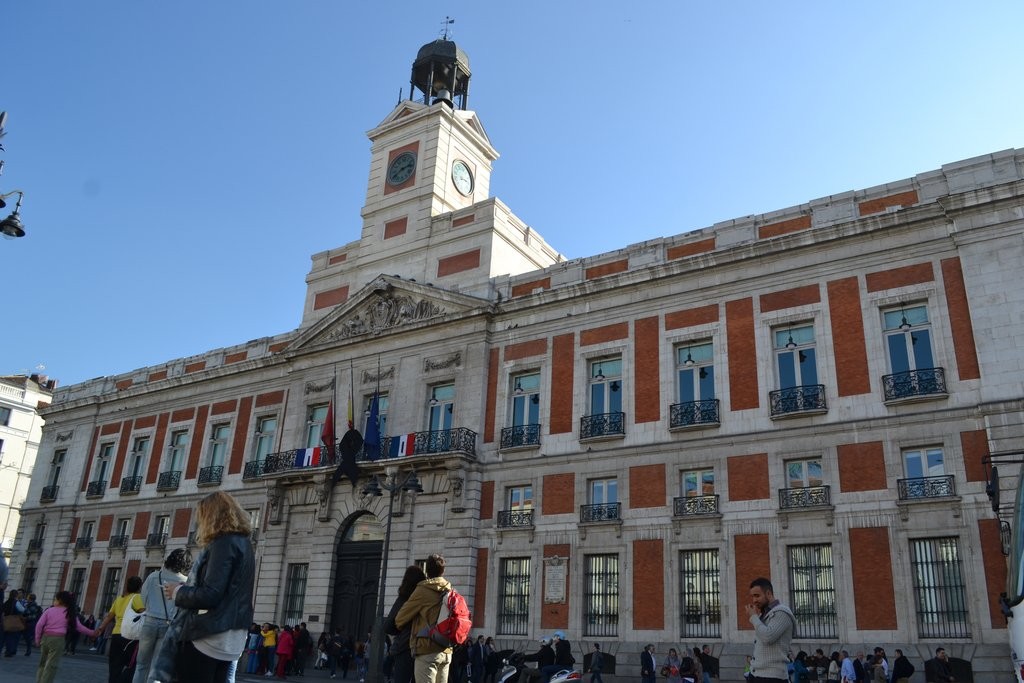
(The Royal House of the Post Office in the Plaza del Sol)
They say that here is the place where everything starts. In the Plaza del Sol, the plaque of the 'kilómetro cero' can be found, which is where all the radial roads start that go from Madrid to a variety of other places in Spain. You will also find the famous 'Statue of the Bear and the Strawberry Tree', which is one of the symbols of Madrid that you have to take a photo of. During the weekends, it is usually full of people, but this will give you the opportunity to observe the Spanish culture firsthand. Be very careful and keep your belongings close to your body, as there are many pickpockets in and around this area.
Stop #5: Shopping on Gran Vía
Travelling further up Calle Preciados towards the Plaza del Sol, you will arrive at Calle Gran Vía. Walking the length of this street will help you delve into the rhythm of Madrid's nightlife, as Gran Vía is considered by many to be the 'Spanish Broadway', and is the perfect option for you if you want to have a day filled with shopping or entertainment.
The Lope de Vega Theatre on Gran Vía is very popular. There, the famous musical theatre spectacular, The Lion King, is performed.
One of the newest and most recent additions to Gran Vía is Primark - the biggest clothing store in Spain located within a five-storey building that occupies almost a whole block. During its first few days of being open, the store was so full that there were people queuing three streets away to get in. If you are interested in knowing more about this store, you can visit my blog and search for the article that I wrote about it. In Gran Vía you will also find other very famous stores, like H&M, Sears, Pull & Bear and Stradivarius.
In this street, you will also find more exclusive hotels, restaurants and bars, although there are also ones available to suit all budgets.
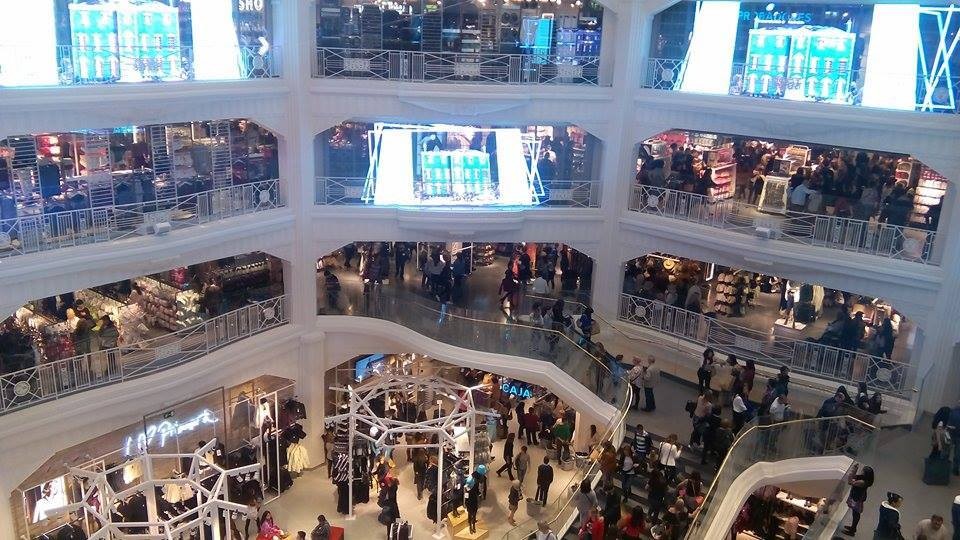
(The enormous, yet modern Primark, which looks like a huge mall in itself, where they could have actually been several stores. All the prices are highly affordable. )
Stop #6: Plaza de Cibeles
Has there ever been a time when you have asked where the Real Madrid fans meet up after their team wins a match? If you are a true football fan, you have a huge excuse to visit the Plaza de Cibeles.
Admire the Cibeles fountain, which many people say protects the ingots of the Bank of Spain, and if any thieves dare to enter the chambers, it will fill with water... (these are just theories though).
In this square, you will find the Madrid's City Hall, where the post office is now located. You will also find the Bank of Spain. One interesting little fact is that, in Mexico City, there is an exact replica of the Cibeles fountain that was gifted to Spain more than twenty years ago.
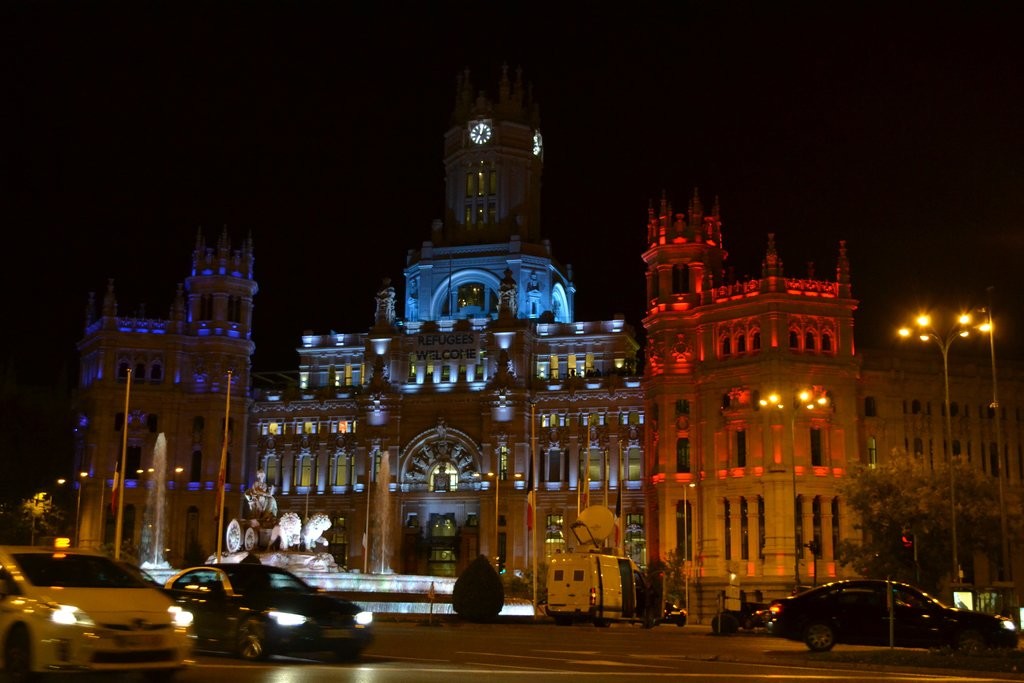
(Plaza de Cibeles at night. On certain occasions, the city hall is lit up - unfortunately, on this occasion, it was for the attacks on Madrid).

(View of Plaza de Cibeles during the day - it looks really different. )
If you have enough money, I recommend that you go into the city council building and pay to go up to the terrace, where you will have spectacular views of Madrid. You can also go to the Círculo de Bellas Artes, which is also located in the same area, where, from the terrace, you will also have other amazing views whilst being able to enjoy yourself with a glass of wine. It's the perfect romantic spot for any couple.
If you want to spend time one of the most important museums in Europe, I recommend visiting the Museo del Prado, which is situated a couple of blocks away from the Plaza de Cibeles. Entrance costs around 13€, but it's free to enter on Sundays after 4pm - but, be warned, the queues are long. If you are a student within Europe and you show your student ID card, entrance will be free.
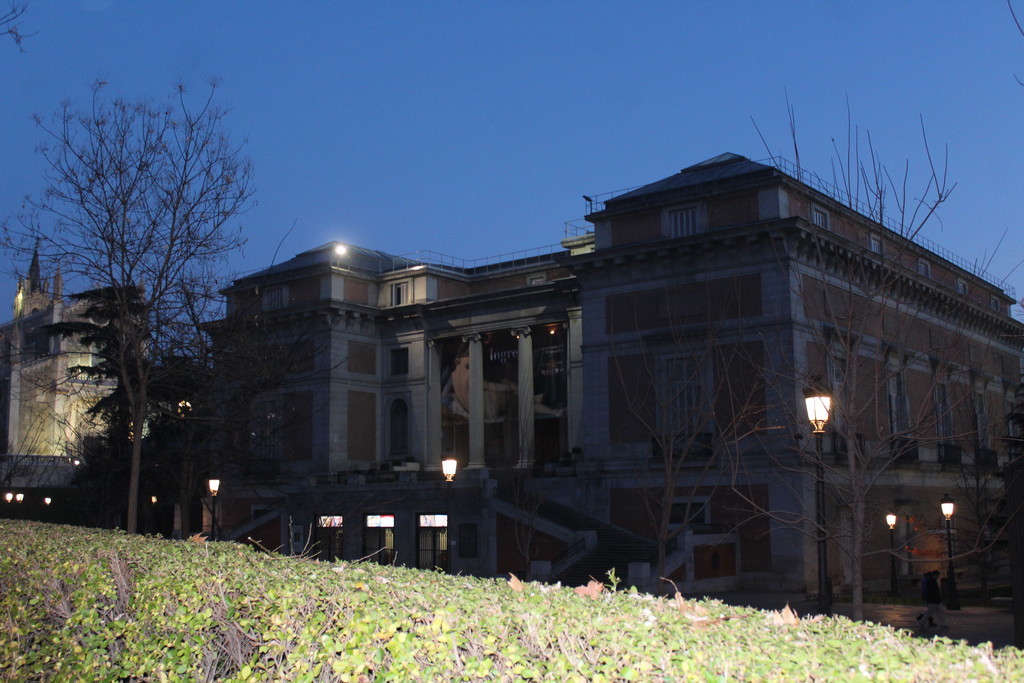
(Main entrance door to the huge Museo del Prado)
Stop #7: Puerta de Alcalá
This is one of other national symbols of Spain found in the Plaza de la Independencia, just next to Buen Retiro Park. This old arch was constructed in the year 1778 to celebrate the arrival of King Carlos III, and was in fact constructed before the Arch de Triomphe in Paris. At the top, you will be able to see four statues that represent the four cardinal virtues of Madrid: prudence, justice, temperance, and fortitude. Now that you already here, I recommend playing the famous song, "La puerta de Alcalá" ("look at it, look at it, look it at, look at it... ").
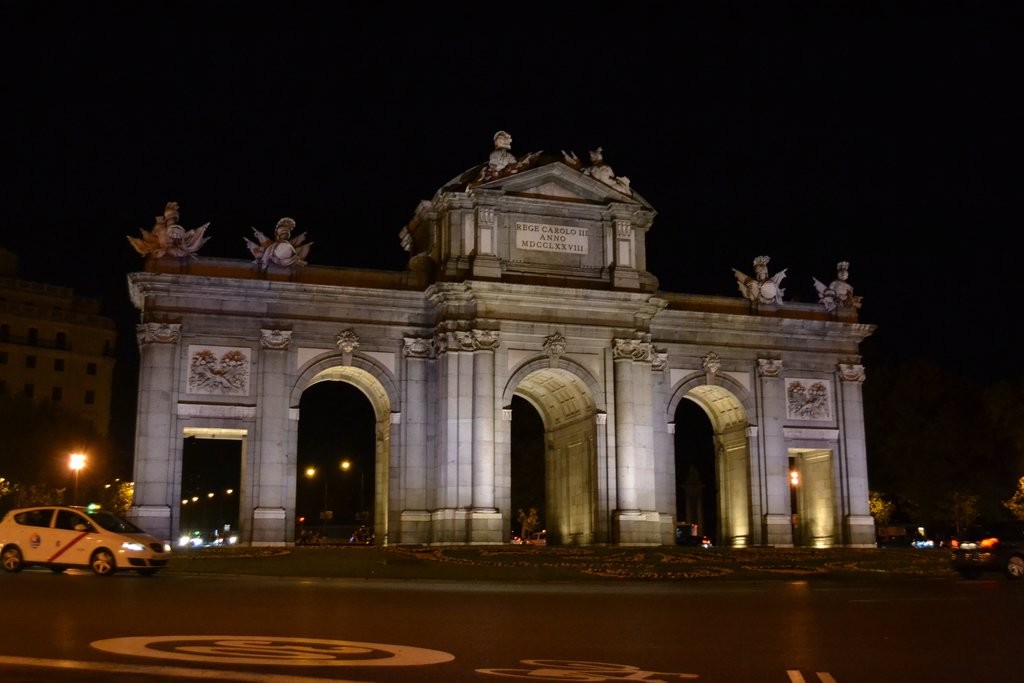
(The Puerta de Alcalá at night - you can see the four angels that reflect the virtues that I mentioned earlier. )
Stop #8: Buen Retiro Park
This is one of the most important sites in Madrid. There are numerous activities that you can do here, like hire a boat and row in the artificial lake, for example. This is really cheap to do - between 5€ and 8€, which, in US dollars, is roughly between $6. 20 and $10 based on the current exchange rate.
Inside the park, there is an extension of the Museo Nacional Centro de Arte Reina Sofía within the Palacio de Cristal - a beautiful iron structure that holds free temporary exhibitions. Go ahead and take a walk in the park, relax while you walk through its endless natural pathways, join the elderly and play chess, or read your favourite book whilst surrounded by a peaceful and calming atmosphere. If you like nature, you will really love this place!
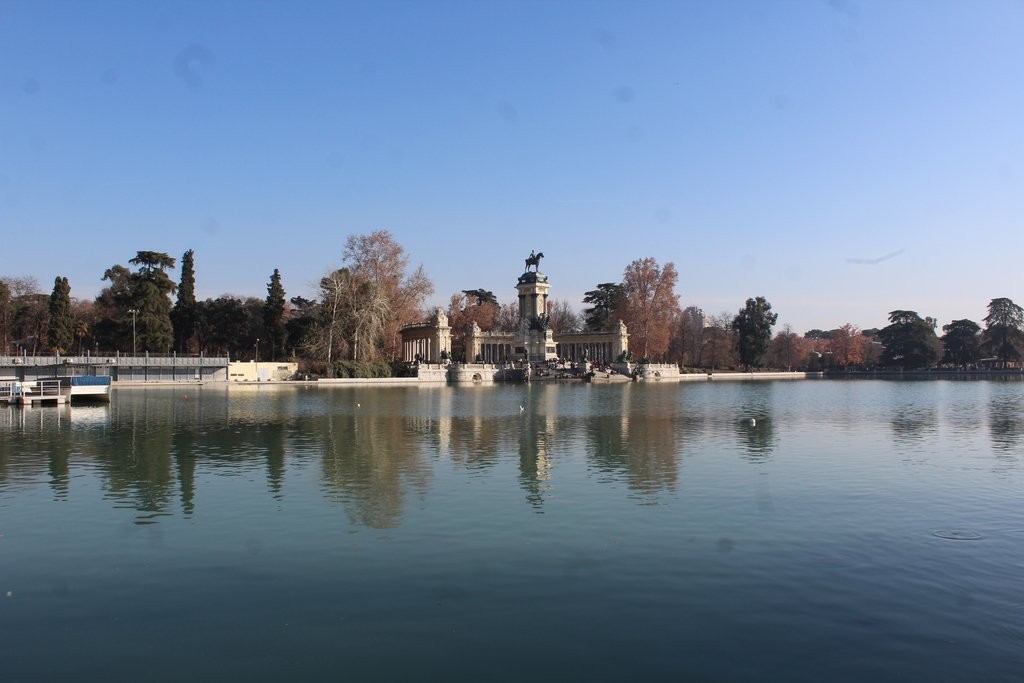
(In this artificial lake, you can hire a boat and enjoy a day of rowing - it's just not open on Mondays... this photo was taken on a Monday. )
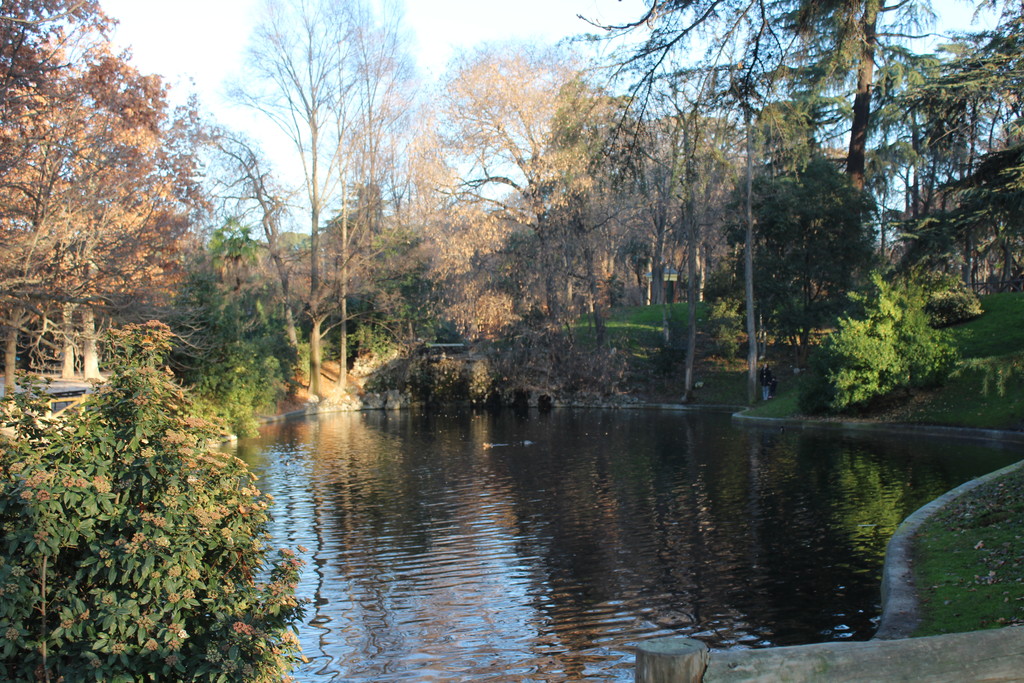
(One of the beautiful hidden pathways in Buen Retiro Park)
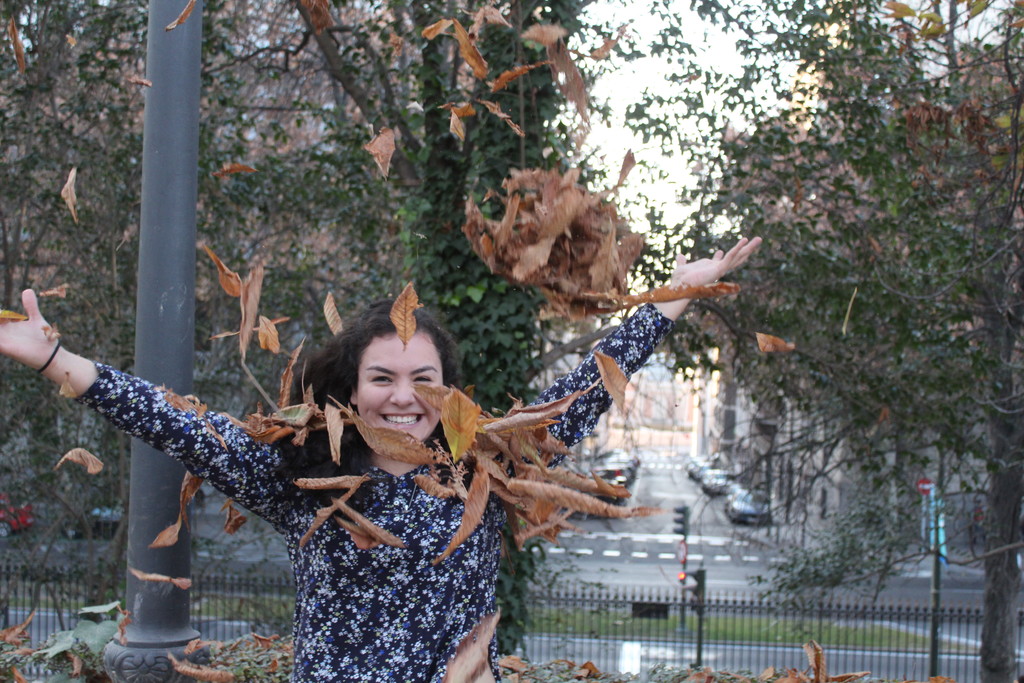
(During the autumn, this park has spectacular views where you can appreciate the really beautiful reddish and orange tones. )
Recommendations
1. If you plan making your way around this city on foot, I recommend wearing decent (sturdy) shoes because visiting all the above on foot will mean walking approximately 10 kilometres.
2. If you get lost, you can go to one of the tourist information offices located in Plaza Mayor. There, they will be willing to help you and give you free maps with suggestions of things to visit.
3. Take precautions to avoid being targeted by pickpockets in packed tourist areas.
4. In order to fully enjoy your stay, I recommend that you have a daily budget of 50€. Within this, include food, transport, some souvenirs and a couple of museum entrance fees. But, equally, you can survive with 20€ too.
Photo gallery
Content available in other languages
- Español: Recorrer Madrid en 24 horas
- Italiano: Percorrere Madrid in 24 ore
Want to have your own Erasmus blog?
If you are experiencing living abroad, you're an avid traveller or want to promote the city where you live... create your own blog and share your adventures!
I want to create my Erasmus blog! →




























Comments (0 comments)